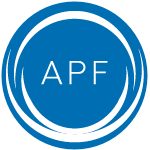Organising the interview
Updated
by Faso Aishath
- Ideally there should be two interviewers, one to lead the interview and one to support.
- The lead interviewer should have expertise, status and knowledge relevant to the investigation.
- All documents should be organised before the interview starts, as well as any equipment, video recordings or notes that may be used during the interview.
- Interviews should take no more than three hours. Include time for breaks if it is necessary for the interview to be longer.
WHO SHOULD CONDUCT THE INTERVIEW?
The NHRI should choose an investigator who is best placed to lead an effective interview. They should have knowledge and understanding of the overall investigation, as well as the ability to establish a rapport with the witness.
In selecting the investigator, attention should be given to gender and culture. Consideration should also be given to the “status” of the investigator, as well as their knowledge of the particular field under investigation.
HOW MANY INVESTIGATORS SHOULD CONDUCT THE INTERVIEW?
It is generally best to have two investigators conduct an interview, including those done by telephone and/or Skype.
Interviewers have a lot to do during an interview, including:
- Asking questions
- Listening to the answers
- Watching body language
- Making notes
- Writing down the statement, if it is not being digitally voice recorded
- Ensuring that recording equipment is working properly
- Producing documents at the appropriate moment
- Crossing off questions as they are answered
- Developing questions as new information emerges.
When there are two investigators, one can concentrate on actively listening to the answers. They can focus fully on the interviewee, ensuring they feel heard and building rapport. The other investigator can look after everything else.
WHAT RESPONSIBILITIES DOES EACH INTERVIEWER HAVE?
The lead investigator:
- Covers the introduction
- Provides background information
- Asks the opening question
- Asks any specific questions not covered in introduction.
The second investigator:
- Makes dot points of what the interviewee says
- Writes down any new questions that arise
- Watches body language, nods and smiles
- Remains silent until the lead interviewer is finished and then the roles reverse.
GETTING ORGANISED
Any materials, such as photographs or documents, should be organised before the interview starts and they should be in the order they are likely to be produced. Original documents should never be taken into an interview in case they are deliberately destroyed.
All electronic equipment – such as video cameras, voice recorders and so on – should be set up and tested beforehand.
It is a good idea to have a calendar available if the interview will discuss dates relating to a series of events. If diagrams or maps are to be used, they should be ready and to hand.
The interviewers should:
- Dress in a professional manner that respects the interviewee and the environment
- Take steps to prevent or minimise interruptions as they disrupt the flow of the interview
- Seat the interviewee where they feel most comfortable.
PHYSICAL SET-UP AND EQUIPMENT
If the interview is being conducted at a location where there is some control over the physical set-up of the room – such as the NHRI’s office – it may be possible to arrange the room to the investigator’s advantage. Safety should always be a key consideration.
The equipment to be used, if possible, should include:
- Two digital voice recorders (DVR), in case one breaks down or malfunctions
- Paper and pens, for notes and diagrams
- A camera to take photographs, particularly to record injury
- Water and glasses.
HOW LONG SHOULD THE INTERVIEW TAKE?
Make sure enough time has been set aside for the interview. Take as long as is needed, particularly with key witnesses. However, care needs to be taken that an interview does not take too long. Interviews should take no more than three hours or so. Include time for breaks if it is necessary for the interview to be longer.
Tips for Beginning the Interview
- Build on any rapport that has been developed: Make use of any information you have been able to gather, for example through an Internet search. If you know the person has a particular interest, casually bring that into the conversation.
- Put yourself at ease: The investigator should do whatever they need to do in order to feel at ease before the interview begins. A relaxed manner will usually be reflected in the quality of the interview
- Look for visual information: The investigator should look at the interview closely for any visual information that may be relevant; for example, clothing that reveals political or club affiliations, glasses, etc
- Explain the interview process: Repeat the personal introduction and explain again the purpose of the investigation. Tell the interviewee beforehand how the interview will be structured and encourage them to be as detailed as possible in their responses.
FIND OUT MORE
Chapter 13, Undertaking Effective Investigations: A Guide for National Human Rights Institutions (APF, revised 2018)
